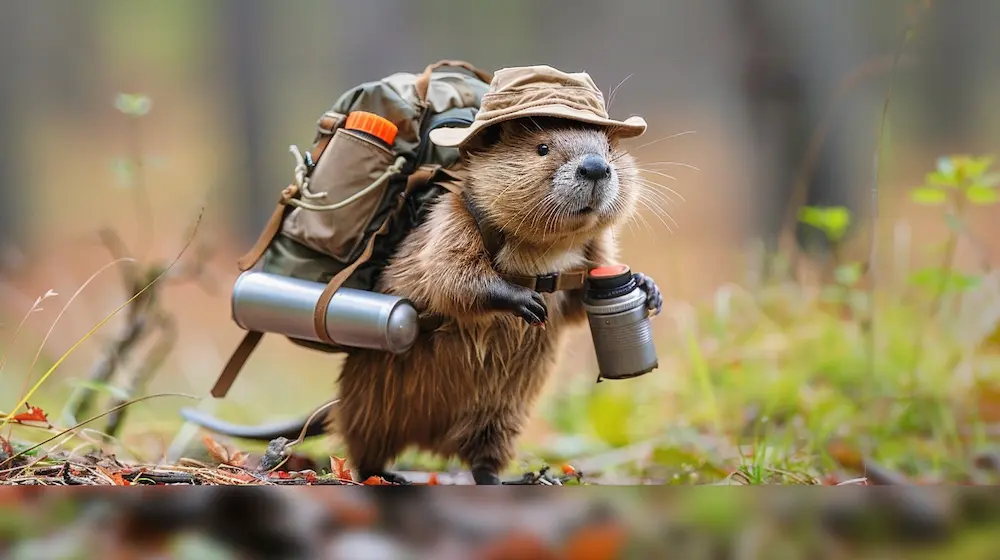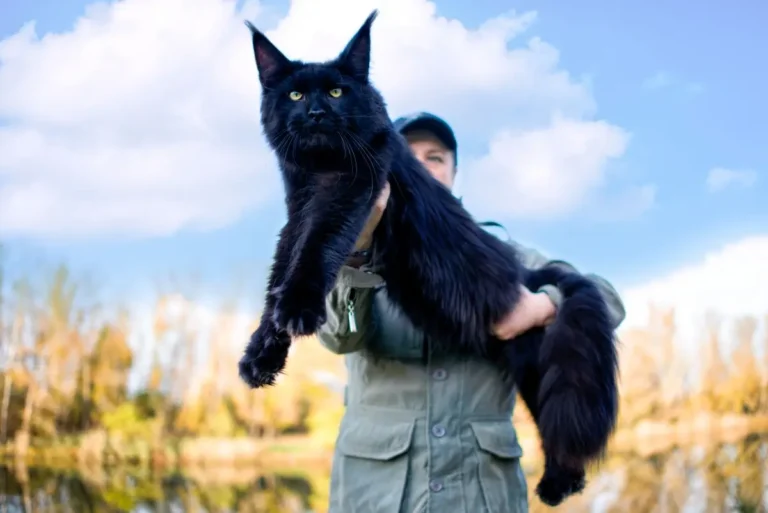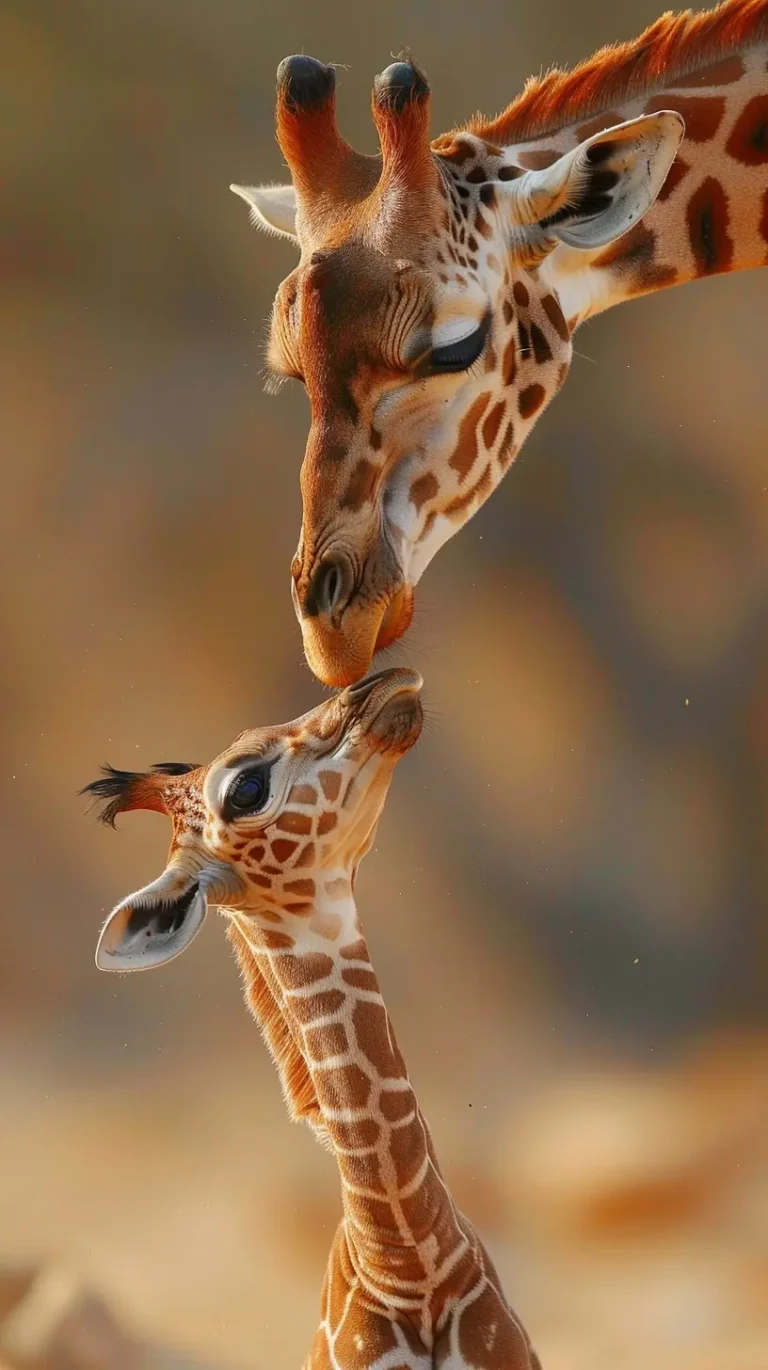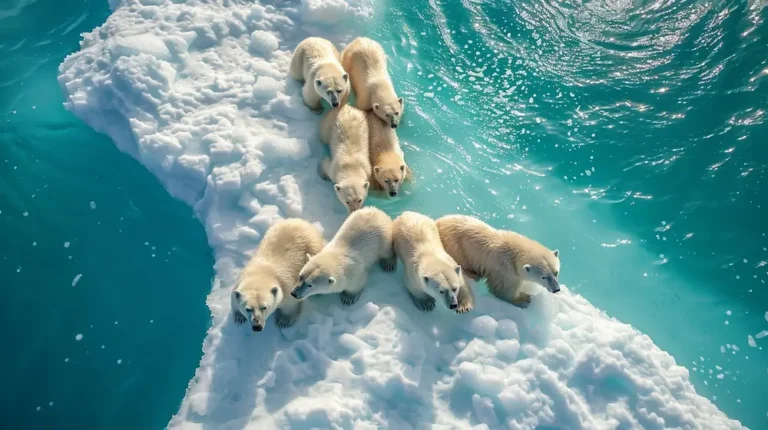🌲 Dive into Beaver Brilliance! 🌲 Ever been intrigued by the industrious world of beavers? These remarkable engineers are more than just builders—they’re nature’s master architects! From their impressive dam-building skills to their fascinating family life, beavers have a lot of amazing secrets to share.
Join us as we explore fun and eye-opening facts about these incredible creatures that will give you a whole new appreciation for their remarkable talents! 🦫💧🔨
Interested in other animal’s facts, check out our curated list for more fun facts about animals.
Size and Appearance
- Beavers are the second-largest living rodents after capybaras, weighing up to 50 kg (110 lb).
- They have stout bodies with large heads, long chisel-like incisors, brown or gray fur, hand-like front feet, webbed back feet, and flat, scaly tails.
- The North American beaver and Eurasian beaver are the two existing species. They differ in skull and tail shape and fur color.
Habitat and Behavior
- Beavers live in freshwater habitats like rivers, streams, lakes and ponds.
- They are herbivorous, consuming tree bark, aquatic plants, grasses and sedges.
- Beavers build dams and lodges using tree branches, vegetation, rocks and mud. Dams restrict water flow, and lodges serve as shelters.
- They are mainly nocturnal and crepuscular, spending the daytime in their shelters.
- Beavers hold territories and mark them using scent mounds made of mud, debris, and castoreum.
Social Structure
- Beavers form monogamous pairs and usually live in family groups of up to 8 related individuals called colonies.
- The younger siblings stay with their parents for up to 2 years, helping with infant care, food collection, and dam building.
- Beaver families are territorial and defend against other families.
Adaptations
- Beavers have large skulls with powerful chewing muscles and four chisel-shaped incisors that continue to grow throughout their lives.
- Their eyes, ears and nostrils are arranged so that they can remain above water while the rest of the body is submerged.
- Beavers have closable nostrils and ears, and transparent nictitating membranes that cover their eyes underwater.
Conservation
- Before protections began in the 19th and early 20th centuries, overhunting had nearly exterminated both beaver species.
- Their populations have since rebounded, and they are listed as species of least concern by the IUCN Red List of mammals.
- Beavers are considered a keystone species as their infrastructure creates wetlands used by many other species.
These facts highlight the unique adaptations, social structure, and environmental impact of beavers. They are remarkable rodents that have a significant influence on their ecosystems.
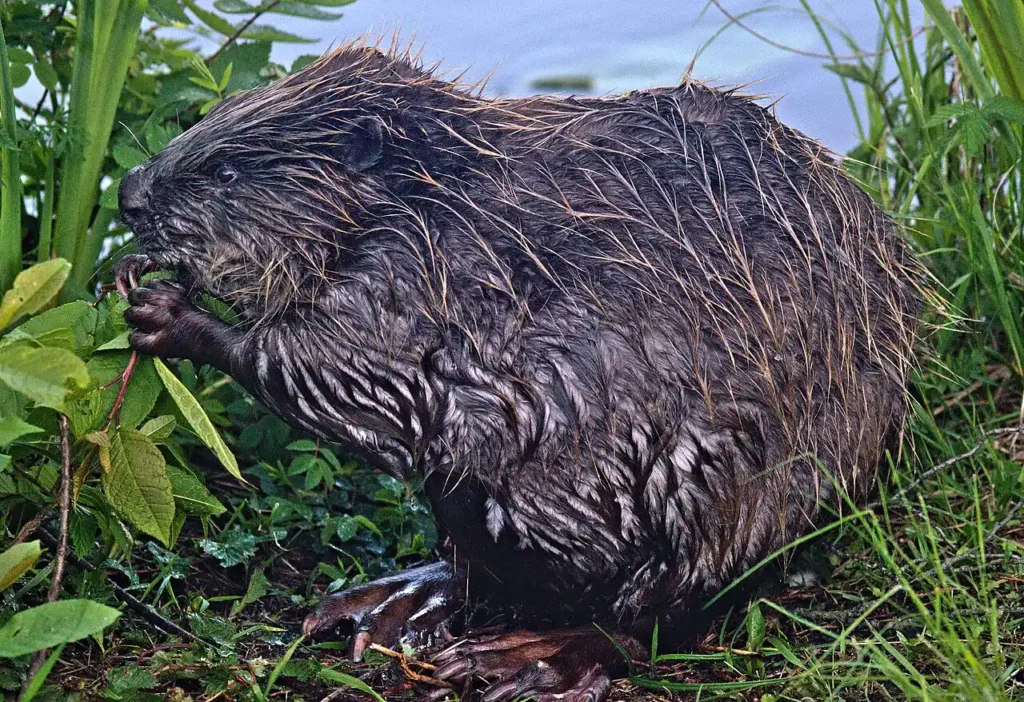
1. Beavers are the largest rodents in North America.
They can weigh up to 50 kilograms (110 pounds) and measure about 1 meter (3.3 feet) in length. [National Geographic]
2. They are excellent swimmers.
Beavers can hold their breath underwater for up to 15 minutes while swimming. [WWF]
3. Beavers have webbed feet.
Their hind feet are webbed, which helps them swim efficiently, while their front feet are more dexterous for manipulating objects. [National Geographic]
4. They have orange teeth.
Beavers’ teeth are orange due to a layer of iron-rich enamel that makes them strong and helps resist wear from gnawing on wood. [Britannica]
5. Beavers are herbivores.
Their diet primarily consists of tree bark, leaves, and aquatic plants. [WWF]
6. They build dams.
Beavers construct dams to create ponds, which provide them with a safe habitat and access to food. [National Geographic]
7. Beavers can fell large trees.
They are capable of cutting down trees up to 1 meter (3.3 feet) in diameter using their strong teeth. [WWF]
8. They are nocturnal.
Beavers are primarily active during the night and twilight hours, making them nocturnal animals. [National Geographic]
9. Beavers are social animals.
They typically live in family groups called colonies, which can include parents and their young. [Britannica]
10. They have a unique reproductive system.
Beavers are monogamous and form lifelong pair bonds, with both parents involved in raising their young. [WWF]
11. Beavers can modify their environment.
Their dam-building activities create wetlands, which benefit many other species and help maintain biodiversity. [National Geographic]
12. They have a thick layer of fur.
Beavers have dense fur that keeps them warm and dry, even in cold water. [WWF]
13. Beavers communicate through vocalizations.
They use various sounds, such as whines and growls, to communicate with each other. [Britannica]
14. They have a special adaptation for cutting wood.
Beavers’ incisors grow continuously throughout their lives, allowing them to gnaw on wood without wearing down their teeth. [National Geographic]
15. Beavers can swim long distances.
They have been known to swim up to 8 kilometers (5 miles) in one trip. [WWF]
16. They have a unique tail.
Beavers have a broad, flat tail that helps them steer while swimming and acts as a warning signal when slapped on the water. [Britannica]
17. Beavers are important ecosystem engineers.
Their dams create habitats for a variety of wildlife, including fish, amphibians, and birds. [National Geographic]
18. They can live for over 10 years in the wild.
In captivity, beavers can live up to 24 years, but their lifespan in the wild is typically shorter due to predation and habitat loss. [WWF]
19. Beavers are territorial.
They mark their territory with scent mounds made of mud and castoreum, a substance produced by their scent glands. [Britannica]
20. They are known for their playful behavior.
Young beavers often engage in playful activities, such as sliding down mud or snowbanks. [National Geographic]
21. Beavers can alter water flow.
By building dams, beavers can change the flow of streams and rivers, impacting the surrounding environment. [WWF]
22. They have a unique way of walking.
Beavers walk on their knuckles to protect their webbed feet when on land. [Britannica]
23. Beavers are sensitive to pollution.
Their presence in an ecosystem can indicate water quality, as they are affected by pollution and habitat degradation. [WWF]
24. They have a special gland for producing castoreum.
This substance is used for scent marking and has been historically used in perfumes and traditional medicine. [National Geographic]
25. Beavers are often featured in folklore.
They are depicted in various cultures as symbols of industriousness and resourcefulness. [Britannica]
26. They can modify their diet based on availability.
Beavers will eat different types of vegetation depending on the season and what is available. [WWF]
27. Beavers have a significant impact on their ecosystem.
Their activities help maintain wetland areas, which are crucial for biodiversity and water filtration. [National Geographic]
28. They can be found throughout North America.
Beavers inhabit a wide range of habitats, including forests, wetlands, and urban areas. [WWF]
29. Beavers have a complex social structure.
Within a colony, beavers have defined roles, with older siblings often helping care for younger kits. [Britannica]
30. They are primarily active at dusk and dawn.
Beavers tend to forage for food during the twilight hours, making them crepuscular animals. [National Geographic]
31. Beavers can build dams quickly.
They can construct a dam in just a few days, depending on the available materials. [WWF]
32. They have a unique method of storing food.
Beavers create underwater food caches by placing branches and twigs in the water near their lodges. [Britannica]
33. Beavers are known to work together.
They often collaborate on building and maintaining dams and lodges as a family unit. [National Geographic]
34. They have a keen sense of smell.
Beavers rely on their sense of smell to communicate and detect potential threats in their environment. [WWF]
35. Beavers are a keystone species.
Their presence in an ecosystem can significantly influence the structure and function of the environment. [Britannica]
36. They can change the landscape.
Beaver dams can create ponds that alter the surrounding landscape and hydrology. [National Geographic]
37. Beavers are known to be good parents.
Mother beavers are nurturing and protective of their young, teaching them essential survival skills. [WWF]
38. They have a unique way of grooming.
Beavers use their front paws to groom their fur, ensuring it remains waterproof and insulating. [Britannica]
39. Beavers can be affected by climate change.
Changes in precipitation patterns and temperatures can impact their habitats and food sources. [WWF]
40. They have a special adaptation for winter.
Beavers can dive under the ice to access food during winter, using their stored caches. [National Geographic]
41. Beavers can be seen in urban areas.
In some regions, beavers have adapted to living near human developments, creating ponds in parks and gardens. [Britannica]
42. They have a strong impact on water quality.
By creating wetlands, beavers help filter pollutants and improve water quality in their habitats. [WWF]
43. Beavers are often studied in ecological research.
Their behaviors and impacts on ecosystems make them valuable subjects for scientific studies. [National Geographic]
44. They are sometimes seen as pests.
In areas where beavers build dams that flood agricultural land, they can be viewed as nuisances. [Britannica]
45. Beavers have a unique way of marking territory.
They use scent from their castor glands to establish territory and communicate with other beavers. [WWF]
46. They are important for flood control.
Beaver dams can help mitigate flooding by slowing down water flow and creating storage areas for excess water. [National Geographic]
47. Beavers can be found in both North America and Eurasia.
The North American beaver (Castor canadensis) and the Eurasian beaver (Castor fiber) are the two main species. [Britannica]
48. They have a complex vocal communication system.
Beavers use a range of vocalizations, including whines, growls, and tail slaps, to communicate with each other. [WWF]
49. Beavers can impact fish populations.
By creating ponds and wetlands, beavers provide habitats for fish and other aquatic species. [National Geographic]
50. They are fascinating creatures.
Beavers are remarkable rodents that play a crucial role in maintaining healthy ecosystems through their unique behaviors and adaptations. [Britannica]These fun facts about beavers highlight their unique adaptations, behaviors, and the significant role they play in their ecosystems. Each fact is supported by reputable sources, emphasizing the importance of beavers in the natural world.
